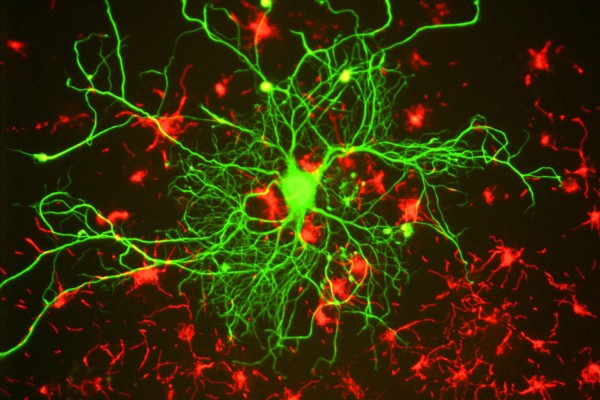Alternative methods for determining neurotoxicity
10 years agoThe occurrence of neurotoxicity, or a harmful change in the functioning of nerve cells and therefore also the brain, is very important when determining whether a substance is safe for normal use. Experiments on animals are often used for this purpose
The application of the animal experiment proceeds as follows. A laboratory animal is exposed to the substance being tested, and is then observed for changes in behaviour. Here subtle changes are important, for example whether an animal retains the same learning capabilities and memory as animals in the control group. Upon completion of the experiment the animals are euthanised in order to check whether the brain has suffered morphological damage.
There is an alternative
According to Remco Westerink (IRAS, Universiteit Utrecht) there is another way. His research group investigates alternative methods to determine the possible harmful effects substances have on nerve cells. Westerink: “Changes in animal behaviour are very good predictors of the harmful effects a substance has on the nervous system, but this kind of research is also very expensive and time consuming, and requires the use of laboratory animals. But change in behaviour can of course only appear if something changes in the way the underlying structure, the nerve cell, functions. It should be possible to research these effects largely without laboratory animals.”
Cultured neural networks
For this reason, his group carries out lab work using cultured nerve cells in order to see whether exposure to test substances results in a change in the way these cells function. Westerink: “We have been doing this for years, but we are still often asked how predictive these in-vitro experiments are. Surely specifically testing individual nerve cells or their components is very different to testing a brain.”
For two years, the research group has been using cultured neural networks instead of individual nerve cells to quickly determine whether a substance affects the way the brain functions. Westerink: “Of course these neural networks are still not a real brain, but they are fairly close. Within approximately one week the cultured nerve cells develop into a real network. The cells in this network spontaneously start to communicate, just like in a real brain.” The level of communication and any changes caused by test substances are measured using a so-called multi-electrode array: a kind of circuit board with multiple electrodes that act like wire taps and record how actively the cells in the network communicate with one another.
Humane stem cells
This system currently performs best with primary nerve cells that are still obtained from a laboratory animal donor, but Westerink and his team are working hard to make the system suitable for use on human stem cells. It is possible that the predictive value of these humane cells could be even better. This presents opportunities to research the effects of substances on the developing nervous system whilst reducing the need for laboratory animals.


